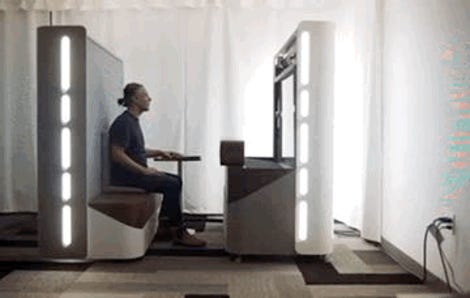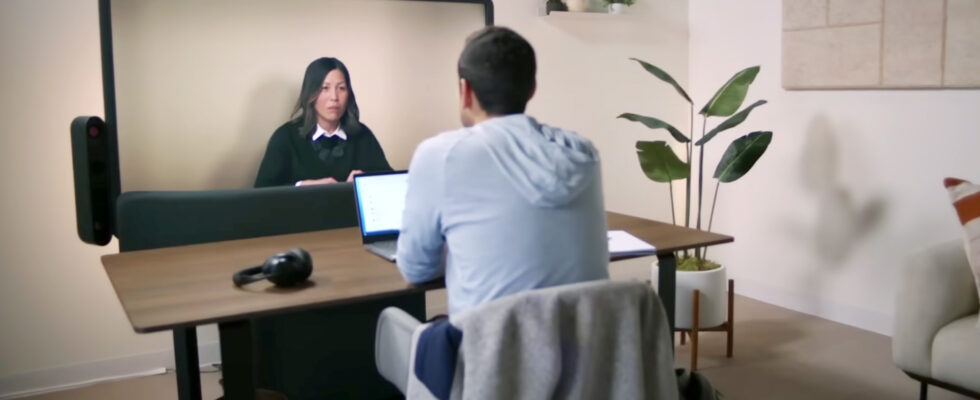The different iterations of the Starline project tend towards the miniaturization of the machine. The latest presented by Google has the shape and size of a flat screen TV. Google
At the Google I/O conference held last week, many announcements about the use of artificial intelligence and new products took center stage. But the company’s Starline project, a video conferencing system that makes the person participating in your virtual meetings appear to be right in front of you, was also mentioned.
Remote work is more prevalent than ever in human history, and companies like Logitech (with Project Ghost) and Google are looking to reinvent what it looks like. The Starline project uses AI to create a photorealistic model of another person that appears to be talking to someone through a window rather than through a computer screen.
Google has pared Project Starline technology down from the cabin used in early prototypes to a system the size of a free-standing TV. It has achieved this through major advances in artificial intelligence, which combines data from several standard cameras and sensors to create realistic 3D images from a screen.

Reduced from the size of a large restaurant booth to that of a video conferencing system. Google
“Just seeing a person in 3D is truly exceptional”
The tech giant has already rolled out the latest Project Starline prototype through an early access program, giving companies like T-Mobile, Salesforce and WeWork a chance to try it out. Some of the user experiences were shared yesterday in a video posted by Google.
“Just seeing a person in 3D is truly amazing,” David Levinson of Salesforce said in the video.
These video conferencing techniques aim to make someone miles or oceans away feel like they’re in front of you.
“Create authentic and immersive connections that foster deeper relationships”
“The Starline Project can help create authentic and immersive connections that foster deeper relationships with our employees and customers, build trust and transparency, and drive productivity and efficiency,” explained Andy White, vice- Senior President of Business Technology at Salesforce.
In its earlier versions, the Starline project required the use of infrared light emitters and special cameras to obtain realistic images. Once assembled, this system took up the space of a large cubicle, which poses challenges for offices that want to adopt this technology without sufficient space.
Source: “ZDNet.com”
